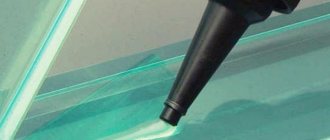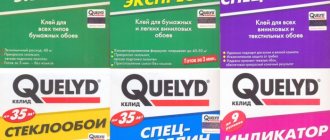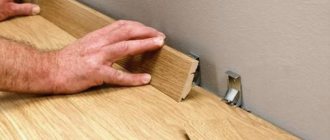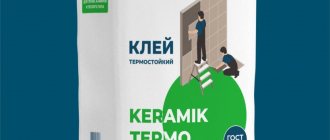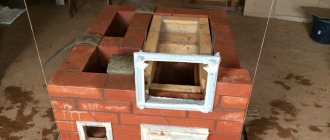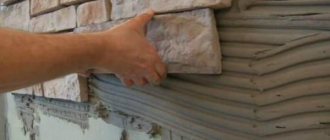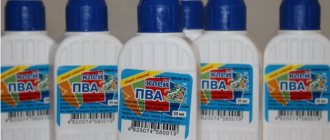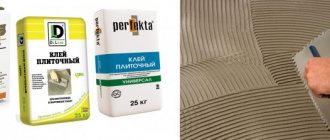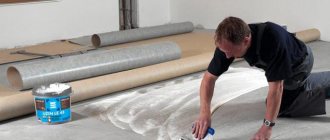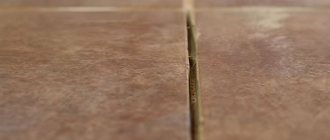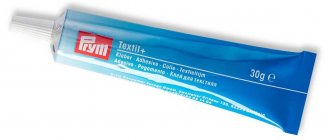| Place | Name | Characteristics in the rating |
| TOP 10 best adhesives for PVC boats |
| 1 | Bostik NE486 | The best choice |
| 2 | Vial I-900 | The most reliable one-component adhesive |
| 3 | Rogneda UR-600 | The best all-purpose glue |
| 4 | Three whales | Attractive price |
| 5 | PVC moment | Most Popular Brand |
| 6 | Reaktor liquid patch | Lots of positive reviews |
| 7 | KLEYBERG | Best for professionals |
| 8 | Super NN | Good value for money |
| 9 | Bravo SP17 | Powerful adhesive for synthetic materials |
| 10 | WAKOL MS 552 | Wide purpose |
A boat made of polyvinyl chloride is the most affordable, convenient and practical option for fishing or hunting from the water. It does not take up much storage space. It has a flat bottom, which allows you to go even into shallow bodies of water, and also makes it possible to handle it alone due to its relatively light weight.
But there is also a drawback, which is the low strength of PVC, which often leads to cuts and punctures. Fortunately, they are easy to fix. In most cases, unless the cut is more than 15 centimeters in length, you can handle the repair yourself. The main thing is to choose the right glue, which should have the following qualities:
- high adhesion with any subtypes of PVC and plastic;
- homogeneity;
- resistance to contact with water;
- resistance to ultraviolet exposure.
It is worth noting that not every glue can boast of such a set of qualities. In addition, many transparent products turn yellow over time, which looks unattractive and also indicates a low service life of such adhesive. We have selected only the best PVC adhesives that will perfectly restore your boat, and it will last for many years.
Film
PVC film is intended for cladding furniture facades, swimming pools, doors and other surfaces. At home, the only possible option is self-adhesive film. To attach such a coating using glue, you need industrial equipment - a vacuum press or a welding machine.
Thus, PVC film adhesive is used on an industrial scale in furniture manufacturing plants or construction organizations. It is selected by specialists based on the purpose, temperature conditions and gluing method. Most often, two-component compositions are used, since they have a higher heat resistance class.
Recommendations for use
In order to reliably seal a cut, the surfaces need to be properly prepared:
- the first step is to bleed the air from the boat;
- the surfaces to be glued must be thoroughly washed and dried;
- to prevent the formation of wrinkles, it is recommended to place a flat board under the work area;
- Before gluing, the surfaces must be degreased using any solvent.
At this stage, the preliminary work is completed.
Instructions for use
The area to be glued must be cleared of dust and dirt. The use of sandpaper is not recommended as it may damage the PVC material. Next you need:
- The surfaces to be bonded are degreased with acetone or another solvent. The instructions must be followed exactly, otherwise the material may be damaged.
- To cut a patch of the required size and configuration, it is necessary to take into account the size of the cut. After all, punctures come in a variety of formats. Therefore, the size of the patch should be several centimeters larger than the size of the defective area. The cut piece of rubber is placed on the damaged area and outlined with a marker or pencil.
- A thin layer of adhesive is applied to the cut patch and the gluing area. The composition should dry within 10 minutes. Then apply another layer of glue to both surfaces. You need to keep it in the open air for about 2 minutes.
- Before gluing, it is recommended to heat the defective area with a hairdryer and then apply the prepared patch.
- Then it is necessary to remove the air layer from the entire area. To do this, both surfaces must be rolled with force with a roller. It is better to use the product 2-3 days after gluing.
Minor damage can simply be filled with glue. If the defect is larger than 5 cm, then it is better to use 2 patches. One is placed on the inside, and the other on the outside.
Fabrics
PVC fabrics are used in the production of tents, boats and other similar products. During operation, material damage may occur that must be repaired. These are the most common cases where PVC fabric glue is used.
Thermoplastic or polyurethane compounds are used for these purposes. When repairing a tent awning, patches of PVC fabric are used, which are sewn on with silicone threads, glued and heated using an industrial hair dryer to activate the glue. Instead of a hairdryer, you can use improvised means, but it is important not to damage the fabric itself.
Carrying out repairs in different situations
It happens that a defect of a large size or a special shape or location is formed. In this case, the repair may have some peculiarities.
Punctures, burns while fishing
If the puncture occurs away from home, emergency repairs can be performed. A patch is cut out from the rubber at hand, glued to the damaged area, and pressed for 30 minutes. After returning home, you will have to detach the patch and repeat the work, but only observing the mandatory points - cleaning, degreasing. Some adhesives should be applied in this way:
- apply the first adhesive layer on the patch;
- let it dry for 5 minutes;
- apply another layer to the base and patch;
- after 5 minutes, lean the patch;
- roll with a roller or a bottle filled with hot water.
Large punctures
When the damage is larger than 5 cm, you need to apply 2 patches to it. One is attached from the inside, the second is placed outside. The inner part is glued first, and only after it has dried, the outer patch is attached. Holes that are too large are repaired in workshops.
There is another option for repairing large holes:
- wash, dry, degrease the surface;
- sew the edges with harsh or nylon threads;
- seal the puncture with two patches;
- Allow the glue to dry completely.
Bottom cuts and torn holes
It is recommended to repair the bottom in a workshop - it will be much more reliable. Without vulcanization, the heavily stressed patch may come off. However, small defects can be sealed yourself by using two patches: external and internal. To increase strength, you can glue another one, but of a larger size, onto these patches. Torn holes will have to be sewn up first, and then covered with patches.
Re-gluing oarlocks
The oarlock is the element of the vessel in which the oar is secured. Because oarlocks are subjected to high loads, they can become detached from the base or simply break. Before repairs, the old rowlock must be dismantled, having previously warmed the joint with a hair dryer. Then the new part is glued using rubber or polyurethane adhesives. Adhesive compositions are applied in 2 layers (the second – 5 minutes after the first). Heat the glued area again with a hairdryer and let it dry for 1 day.
Sealing seams
The repair process is carried out in a similar way, only two patches must be applied - on one side and on the other side of the seam. All actions are performed carefully so that there are no gaps on the folds. After the glue has dried, you need to prepare a thick soap solution or take shaving foam and cover the damaged area. If no air bubbles appear, it means the repair was done efficiently.
Re-taping
It is necessary to re-glue the tapes on the seams only when the boat is fully inflated, otherwise the quality of the connection will be poor. Old tapes can be removed without problems, but removing the adhesive may be difficult. You will have to use sandpaper, solvent, gasoline.
After the glue is applied to the tape and base, after 5 minutes another layer of it is applied. After 10 minutes, the tape is well pressed to its original location. For normal connection, you need to make the adhesive seam larger than the width of the tape by 10 mm in each direction.
You need to start gluing the tape from the bottom of the boat. The material is laid under tension to ensure maximum contact with the surface. After gluing is completed, the tape is ironed with a rag.
Gluing the transom
The transom is the area where the motor is mounted. Under such weight, this element often deteriorates and requires repair. Typically, polyurethane glue is used to glue this part, which has sufficient adhesion and elasticity. The work is carried out in a similar sequence: cleaning, degreasing, applying glue, pressing the part, waiting until it dries completely.
To prevent damage to the boat, it must be stored and used correctly. If you store the product in a slightly deflated state, covered with an awning, the risk of rupture and puncture is reduced. The boat must be transported carefully, and when sailing it is important to avoid friction, scratching, and touching sharp objects. Such tips will help the fisherman avoid problems and waste of time on repairs.
Damage Prevention
After repairs or when purchasing a new boat, you need to properly care for it, which will prevent various damages. Maintenance concerns the operation and storage of the watercraft.
How to properly handle an inflatable PVC boat:
- Transportation of watercraft. When deflated, the boat must be placed in a transport bag so that it is not accidentally damaged by sharp objects. When transporting on a trailer, you should place something soft under it.
- Loading. The cargo placed in the craft must be secured with straps in order to distribute the load over a large area. There should be no sharp objects sticking out on board.
- Unloading. You should not create excessive friction, and after unloading you need to clean the boat of sand and dirt. Before storing in a deflated state, it should be washed with water. When folding, it is important to ensure that no objects remain in the folds, especially sharp, protruding branches.
- Cold storage. For the winter, before folding, the boat should be washed with soapy water. PVC can be chewed by rodents, and the smell of soap will scare them away. You can also treat the swimming device with a special repellent solution.
- Operation. In sunny weather, it is recommended to use additional protective equipment from the sun's rays; they also reduce the force of friction against stones and other obstacles. But you need to be careful, because the boat becomes slippery after applying such compounds.
- Swimming. In rough waters, you need to stop your boat in places where there are fewer rocks and branches that could potentially damage it. It's best to drag her ashore. You need to periodically check the pressure, which can be done by standing on the cylinder. Weighing about 80 kg, it does not sag, which indicates an optimal level.
- Self-repair. You should always carry a repair kit with you. You can easily repair a boat with your own hands, but doing it with improvised means is ineffective, it can only cause harm. In case of significant damage, you should contact a professional.
When storing the boat, you need to lower the cylinder slightly, reducing the pressure. It may remain in a slightly deflated state until the next season. In this case, it must be covered with an awning. To save space in the garage, you can simply lower it. To store it in this form, it is best to use special bags that provide the most comfortable position for the watercraft. But you should not fill the free space with other devices.
When choosing an adhesive for PVC products, it is better to give preference to well-known brands that are recommended by professionals. You can consult with a specialist directly upon purchase. It is better not to take the product from untested places, because a low-quality composition can ruin the appearance and quality of the boat.
PVC boat repair (2 videos)
Types and use of glue for repairing PVC boats (20 photos)
Results
First of all, you need to pay attention to the quality of the glue and its properties. Cheap options do not always guarantee reliable and durable results. To fix a puncture, you need to study the instructions and follow them strictly.
In conclusion, we can draw conclusions which of the means is the best:
- In situations of small punctures and cracks, a liquid patch will be your salvation.
- If it is necessary to replace the PVC fabric, a two-component adhesive is needed to connect the patch.
- Defects in boat fittings are best corrected with a one-component product.
- It is recommended to take small travel options on the road.
- Major permanent repairs must be done using a professional two-component adhesive.
To choose an adhesive for repairing a PVC boat, you need to study the characteristics of the best compounds, as well as read user reviews.
General information
PVC owes its popularity to its positive qualities, among which are the following:
- Long service period (up to 10 years);
- Easy care;
- Environmental friendliness of the material;
- Moisture resistance;
- Fire resistance;
- Additional soundproofing effect;
- Resistance to high and low temperatures;
- A large number of colors and patterns on PVC panels;
- Possibility of attaching panels to a wall or floor made of different materials.
After PVC products are selected as a building material or pipes, it is necessary to purchase glue to attach them. A good composition is moisture resistant, does not crumble and does not change color during use.
What is the best glue for PVC boats?
Conditions of use may vary dramatically. The user may have a lot of free time for leisurely work or an acute shortage of it during a hike. For these reasons, it is impossible to choose a universal solution. The VyborExperta.ru team recommends the following brands, taking into account the specific application:
- Kleyberg “Master” - for major repairs during a hike;
- Borika Pg40 – choice for work in a home or professional workshop;
- Cosmofen Plus-S – for gluing rigid elements;
- Liquid Patch 24 – for emergency restoration of tightness.
All the compositions presented in the review are worthy of the attention of lovers of outdoor activities, but only the most functional and convenient to use were awarded the title of best in their categories.
Popularity rating of the best compositions
Currently, manufacturers offer a wide range of repair kits for gluing. Buyers have a wide choice. Each tube of glue includes detailed instructions for repairing inflatable boats with your own hands. However, not all manufacturers indicate the real positive and negative aspects of their products. The best brands of glue will be discussed below.
The most inexpensive
PVC moment
You can’t find a person in Russia who doesn’t know anything about this brand. Under the Moment brand you can purchase any type of glue, and advertising from this manufacturer is very extensive, so it is incredibly popular. And if in terms of recognition the product could be put in first place, then in terms of its qualities the glue occupies a far from leading position.
People who repair PVC boats on a professional basis react negatively to the brand due to the discrepancy between the declared quality and the real one. At the same time, no one advises avoiding the Moment. It is really capable of gluing parts together, and a non-professional can easily use it. However, there are more effective and also attractively priced options.
Cost: 95 rub. (30 ml).
glue Moment PVC
Advantages:
- can be easily found in various stores and supermarkets;
- waterproof, can be used for boat repairs;
- easy to use.
Flaws:
- the glue loses its properties when exposed to the sun for a long time;
- if gasoline, oil or other solvent gets on the patch, the adhesive layer will be destroyed;
- high toxicity.
Vial I-900
Many users of specialized forums agreed that when puncturing a boat, it is much better to use one-component glue. There is an opinion that such products are easier to place; there is no need to measure the components in strict proportions. However, Vial glue contradicts established practice. The difficulty lies in the speed of setting and drying of the glue, which is calculated in seconds. After this, it is impossible to correct the shortcomings that have arisen.
The glue must be applied to the placed patch, the surface of which has been carefully processed. The result is monolithically connected parts that have become one whole. The secret of the glue lies in its ability to heat the rubber surface, resulting in a tight bond. With Vial glue, any puncture can be repaired in a few minutes. There is no need to mix anything, just take the tube with you on the go.
Cost: 100 rub. (25 ml).
glue Vial I-900
Advantages:
- tight adhesion;
- no need to mix.
Flaws:
- not detected.
Bostik NE486
In first place was a two-component product that does an excellent job not only with punctures of PVC boats, but also with the repair of other rubber products. There are many positive reviews about this glue from both ordinary boating enthusiasts and repair professionals. Although its price may seem high to some, it quickly pays for itself due to quality results. The connection of materials is strong enough to withstand constant loads.
The glue is sold in 1 liter jars, this volume is enough for a huge number of repairs. The need for everyday life is not so great, so it is not advisable to buy it for home, while for a professional Bostik can become an indispensable tool. Those users whose boat is constantly damaged for some reason can purchase this product and not regret it. It is also noteworthy that in addition to rubber products, it can be used to join parts made of wood, metal or leather. Before use, it is recommended to read the instructions and study all the nuances of working with different materials.
Cost: 100 rub. (25 ml).
glue Bostik NE486
Advantages:
- withstands high temperatures (up to 80 degrees Celsius);
- not subject to destruction upon contact with solvents;
- excellent grip;
- strong and stable adhesive layer;
- the seam does not separate due to temperature changes.
Flaws:
- highly toxic, work with gloves and a respirator is allowed.
Three whales
Professionals in the repair of PVC products do not favor this product. It is credited with fragility, weak adhesiveness and unsuitability for serious repairs. Adhesive under the Tri Kita brand was included in this rating due to its low price. On the one hand, it is not suitable for full repairs. At the same time, it is effective as a temporary solution in case the boat breaks down while leaving and there are no other options.
The product is one-component, transparent in color. It is easy to apply and you don’t have to wait long for it to dry completely. You won't need any heavy press either. Tri Kita glue is a quick solution for urgent puncture repair. In stationary conditions, the procedure for gluing parts will need to be repeated using a higher quality product. However, it makes sense to purchase a tube of glue that costs 70 rubles and keep it nearby in case of unexpected breakdowns.
Cost: 70 rub. (50 ml).
Three Kita glue
Advantages:
- easy to apply;
- You don’t have to wait long for it to dry completely.
Flaws:
- not detected.
Average price category
Super NN
Most often, professional products cost a lot of money. However, the glue of the presented brand is an exception. Its composition has a one-component structure and is made on the basis of polyurethane resin. There is no need to dilute the mixture or add hardeners. The glue is immediately ready for use. It is often used by professionals in their workshops, since the mass has excellent parameters. For example, the shear resistance of a seam is about 1500 kg. Very good result. The glued surface can withstand temperature changes from -40 to +80 degrees.
The fresh mass has a transparent color. However, users note that over time the composition begins to turn yellow. This fact can be considered a negative point. Because of this, glue occupies a low place in the ranking. The composition is not used in domestic conditions.
Cost: 450 rub. (1000 ml).
Super NN glue
Advantages:
- no need to dilute;
- immediately ready for use.
Flaws:
- the composition is not used in everyday life;
- the composition begins to turn yellow.
Bravo SP17
The glue is made in the USA. The products of this brand have professional parameters. However, the adhesive mass has a fairly high price, which negatively affected the rating. The composition of the product is developed using the most modern technologies. It is not often that you see a professional version in stores, which is produced exclusively in America.
There are still few reviews about the product in our country. But there are plenty of them in America. Users speak positively about the adhesive and call it the best for repairing PVC inflatable boats. We can also add that the composition has universal characteristics; it can glue any synthetic products, as well as materials made on the basis of polymer and natural rubber. The mass dries in just a few minutes. It turns out that the thing can be repaired very quickly. The end result is quite high quality, the product will last a long time. Therefore, you should always have a tube of glue of the presented brand with you when fishing. He will be able to seal the inflatable boat in any situation.
Cost: 700 rub. (20 ml)
glue Bravo SP17
Advantages:
- the composition has universal characteristics;
- qualitative.
Flaws:
- not detected.
Rogneda UR-600
If a rubber boat is handled with care, then the need for repairs may not arise. It is not economically feasible to purchase an expensive tube to correct a one-time puncture. A universal adhesive that can connect any natural and synthetic surfaces will be the best option in this situation. Using Rogneda you can glue products made of metal, wood, plastic, fabric and silicone. This product is used to repair shoes and glue seams on linoleum.
Rogneda is excellent for repairing rubber boats. You don't need to mix anything to get glue. Just before direct application, the mixture must be carefully stirred. The glue is resistant to moisture, and although over time its top layer turns yellow, this does not affect its adhesive layer. Rogneda cannot be considered one of the best means for repairing PVC boats, but as a universal adhesive that should be in any home, it has proven itself to be excellent. Another advantage of this product is the absence of toxic components in the composition.
Cost: 520 rub. (750 ml).
glue Rogneda UR-600
Advantages:
- no need to mix anything;
- resistant to moisture.
Flaws:
- not detected.
Expensive and high quality
Reaktor liquid patch
People often share their experiences on using and repairing rubber boats on specialized forums. Positive reviews often mention Liquid Patch. However, this product receives mostly praise from ordinary users, while professionals do not trust it too much. First of all, the liquid patch is easy to use, despite the fact that it contains 3 main components.
To repair a boat with this glue, you do not need to purchase a patch. The polymer is converted into it as a result of drying. The glue components are mixed and the resulting mixture is applied to the damaged area. There is no need to press the patch or place it under a press. The main thing is to let the glue dry well; for this you do not need to touch the patch for 12 hours. If the buyer is not satisfied with the viscosity of the finished product, he can purchase the components himself and mix them to obtain the desired consistency. It is recommended to buy components from one manufacturer.
Cost: 1,400 rub. (1000 ml).
glue Reaktor liquid patch
Advantages:
- speed of repair;
- Suitable for gluing internal seams of boats;
- no need to use a brush;
- To repair punctures and cracks, you do not need to purchase an additional patch.
Flaws:
- glue is highly toxic;
- small assortment;
- large holes require patching;
- impossibility of repairing fittings with patches.
Kleyberg
Adhesives intended for PVC boats are conventionally divided into 2 types: professional and conventional. The second category is more popular among buyers. Conventional compositions are easy to use; you do not need to purchase any additional tools. Kleyberg belongs to the category of products for professional use, so it is produced in large packs of 15 kg.
On specialized forums you can find a lot of positive reviews about this product. It does an excellent job of gluing rubber and PVC surfaces. In addition, the adhesive is successfully used on leather, plastic and silicone products. It stays high in temperatures ranging from 40 degrees cold to 70 degrees hot. Kleyberg has the best characteristics, but for those who are just learning the basics of repairing PVC products, it is better to pay attention to simple one-component products. It's much easier to work with them.
Cost 4,600 rubles. (15 l).
Kleyberg glue
Advantages:
- water resistance;
- dense structure;
- excellent grip.
Flaws:
- properties are lost at low temperatures;
- Storage conditions include a warm room (from +15 degrees Celsius).
Wakol MS 552
This universal adhesive will hold together any PVC-based material. This composition can be used to repair not only an inflatable boat, but also all things made on the basis of polyvinyl chloride. A large number of adhesives with different properties are not required. WAKOL will cope with all problems and difficulties.
The glue is not professional grade. It is created on the basis of a modified polymer, which makes the bonding area a whole monolith. However, such products have a high consumption. Therefore, it is not produced in small containers. This was the reason for the location of the glue in such a place in the popularity ranking. Although the composition has excellent characteristics.
Cost: 9800 rub. 7.5 l
glue Wakol MS 552
Advantages:
- excellent adhesive characteristics;
- universal.
Flaws:
- high consumption.
Panels
PVC panels have become widespread due to their sufficient strength, water resistance, resistance to temperature changes, and low cost. The fastening of such a facing coating is carried out not only with glue, but also mechanically on the sheathing. The adhesive method is used when the base is level and without any defects.
The main properties of the glue in this case are resistance to temperature changes, moisture resistance, and excellent viscosity. Most often, liquid nails, Moment-Montazh or Titanium are used to fasten panels.
Popular brands and their prices
The “Moment” brand is very popular among users. The manufacturer offers a wide range of different types: glue for boats, “Moment Crystal”, gel, rubber. The products are of high quality, which is reflected in the price - a tube of 30 g of glue costs about 50-60 rubles.
Soudal produces an equally wide range of PVC adhesives for various purposes. For a fairly affordable price (150-200 rubles), the user can choose glue for any highly specialized purpose.
To connect solid structures, craftsmen often advise purchasing “Secunda” cold welding. Also in the line of adhesives there are excellent types for joining soft materials.
When carrying out a large volume of work, the Thomsit brand will be the best choice. The manufacturer suggests choosing a two-component polyurethane composition suitable for PVC in containers of 5-7 kg, the price is relatively low, about 1,500 rubles, which turns out to be very profitable. The glue does not contain toxins and does not emit harmful substances or solvents.
Thus, choosing a glue for PVC is not such a difficult task. It is worth focusing on the type of surfaces to be glued, operating conditions and price category of the product.
Types of products
Currently, developers present a wide range of adhesives for PVC boats. Therefore, the buyer needs to understand the varieties and types of these products. There are two types of adhesives: one-component and two-component. The first type is most often used to repair damaged fittings:
- special fastenings for seats;
- transom;
- oarlock;
- rings
One-component adhesive mixtures have advantages. They are inexpensive and dry in a minimum amount of time. This composition is convenient to take with you on a hike. The fast drying time is very practical. The main disadvantage is that this product is not suitable for patching the hull of a boat.
Two-component adhesives are slightly more expensive. They have the following positive properties:
- tolerate temperature differences well;
- their elasticity is at a high level;
- glued surfaces can be used for a long period of time.
Many manufacturers make two-component mixtures specifically for PVC material. This glue will reliably fasten any fittings, small punctures and large cuts on the body of the inflatable floating device.
Adhesive installation of polyvinyl chloride pipes
Glue for PVC pipes and fittings is also called cold welding, and not by chance, because it distributes the load, which increases strength and extends the service life of the pipeline to the same extent as it ensures the connection of elements by real welding. PVC pipe adhesive creates a polymer splitting reaction in solvents. After the pipe walls have softened, a fitting with softened walls is attached to them. This process is also called chemical welding.
In this case, it is worth considering one feature. Due to the fact that the chemical properties of additives and solvents vary, the choice of adhesive for PVC pipes must be made taking into account the thermoplastic compounds being welded. As a rule, companies producing plastic pipes offer instructions on the optimal solution to this issue. Be that as it may, it is worth remembering that when joining parts made of chlorinated polyvinyl chloride (CPVC) and regular PVC, you need to use different brands of glue.
The use of glue for PVC sewer pipes is considered a fairly popular method, which ensures excellent tightness of the finished structure.
Remember that uneven coating of pipes with glue or the presence of a large number of irregularities can cause partial glue failure. Complete non-gluing may also occur - this happens when both layers of glue dry out. Please note that you only have a few minutes to complete the connection operation.
The appearance of a soft adhesive layer is caused by a low ambient temperature or by allowing a small amount of time for hardening.
The layer may become porous - this happens when the adhesive layer is enriched with air due to poor mixing of the components.
